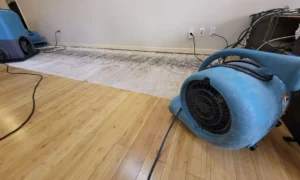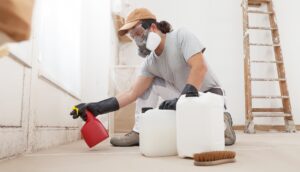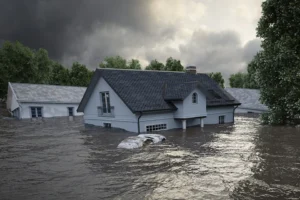Cold weather can bring a unique set of challenges to homeowners, one of the most significant being the risk of burst pipes. When temperatures drop, water inside pipes can freeze and expand, putting tremendous pressure on the pipe walls. This pressure can cause the pipes to crack or burst, leading to serious water damage.
Preventing pipe bursts is essential to keeping your home safe during the winter months. Simple actions, like insulating your pipes or maintaining a consistent indoor temperature, can make a big difference. These steps not only help protect your pipes but also save you from costly repairs and potential damage to your property.
By taking a few proactive measures, you can minimize the risk of experiencing pipe bursts during cold weather. From insulating pipes to sealing cracks and gaps, these strategies are effective and relatively easy to implement. Installing smart home technology can also offer an added layer of protection by monitoring your pipes and alerting you to potential issues. Understanding how to safeguard your home from cold weather threats can help ensure a stress-free winter.
Insulate Your Pipes
Insulating your pipes is one of the most effective ways to prevent them from bursting during cold weather. When you insulate pipes, you add a protective layer that helps keep the water inside from freezing. This added barrier can be crucial, especially in unheated areas like basements, attics, or garages, where pipes are more exposed to cold temperatures.
Several materials can be used for pipe insulation, such as foam pipe insulation tubes, fiberglass wrap, and even heat tape. Foam pipe insulation tubes are easy to install and provide excellent protection against freezing. Simply slip the foam over your pipes and secure it with tape or other fasteners. Fiberglass wraps also work well; they can be wrapped around the pipes and held in place with duct tape. Heat tape is another good option, especially for extremely cold climates, as it can be wrapped around the pipes and plugged in to keep them warm.
Regularly check your pipe insulation to ensure it remains in good condition. Replace any worn or damaged sections to maintain protection throughout the winter. By insulating your pipes, you help reduce the risk of freezing and bursting, which saves you from potential water damage and costly repairs.
Maintain Consistent Indoor Temperatures
Keeping a consistent indoor temperature is another key strategy to prevent pipe bursts. When temperatures inside your home fluctuate too much, it can cause pipes to freeze, especially if the thermostat is lowered too much at night or when you’re away. A steady temperature ensures that pipes are less likely to freeze.
Set your thermostat to no lower than 55°F (13°C) during the winter months. Maintaining this temperature keeps the water in your pipes from freezing, even when you’re not at home. It’s also a good idea to keep cabinet doors under sinks open. This allows warm air to circulate around the pipes and helps keep them at a safe temperature.
If you’re planning to be away during cold weather, ensure your heating system is functional and set to the proper temperature. Consider leaving a few faucets slightly open to allow a slow drip. This helps relieve pressure in the system and keeps water moving, which makes it less likely to freeze.
Using space heaters in particularly cold areas of your home can also help maintain consistent temperatures. Just be sure to follow safety guidelines to prevent any fire hazards. By keeping a consistent indoor temperature, you protect your pipes and avoid the headaches associated with bursts and leaks.
Seal Cracks and Gaps
Sealing cracks and gaps around your home is crucial for keeping cold air out and warm air in. Even small openings can allow cold air to seep into walls and floors, causing pipes to freeze and burst. By sealing these gaps, you help maintain a steady indoor temperature and protect your pipes from extreme weather conditions.
Start by inspecting areas where pipes enter or exit your home, as these spots are often prone to gaps. Use caulking or spray foam to seal any openings around pipes. Pay close attention to windows, doors, and the foundation, where drafts are more common. Weatherstripping around doors and windows can also help keep cold air out.
In addition to sealing cracks and gaps, consider adding insulation to areas like basements, attics, and crawl spaces. This added protection helps maintain a warm environment around your pipes, reducing the risk of freezing. Taking the time to seal and insulate your home can significantly lower the chances of pipe bursts during cold weather.
Install Smart Home Technology for Pipe Monitoring
Smart home technology can provide an extra layer of protection for your pipes during cold weather. Devices like smart thermostats, water leak detectors, and pipe monitoring systems can help you stay ahead of potential problems. These tools can alert you to issues before they become serious, allowing you to take action quickly.
Smart thermostats can be programmed to maintain a consistent indoor temperature, even when you’re not home. This ensures that your pipes stay warm and reduces the risk of freezing. Water leak detectors can be placed near pipes and fixtures to alert you if a leak occurs. These detectors can send alerts to your smartphone, letting you address problems immediately.
Pipe monitoring systems are another effective tool. These systems use sensors to monitor the temperature around your pipes and can send alerts if temperatures drop too low. Some advanced systems can even shut off your water supply automatically to prevent damage.
Using smart home technology provides peace of mind by keeping you informed and allowing you to prevent pipe bursts before they happen. Investing in these devices helps safeguard your home from the potential dangers of cold weather.
Conclusion
Avoiding pipe bursts during cold weather is essential to protect your home from significant water damage. By taking proactive steps such as insulating your pipes, maintaining consistent indoor temperatures, sealing cracks and gaps, and installing smart home technology, you can safeguard your property during the winter months.
Routine maintenance and attention to detail are key. Inspect your home regularly for potential weaknesses and address them promptly. These efforts can save you from expensive repairs and the inconvenience of dealing with burst pipes.
Prevention is always better than cure, especially when it comes to protecting your home. With a few smart practices, you can ensure your pipes remain intact throughout the cold weather. For expert assistance with property damage restoration in Mukilteo, WA, contact Northwest Restoration. Our team is ready to help you keep your home safe and dry. Get in touch with us today.









